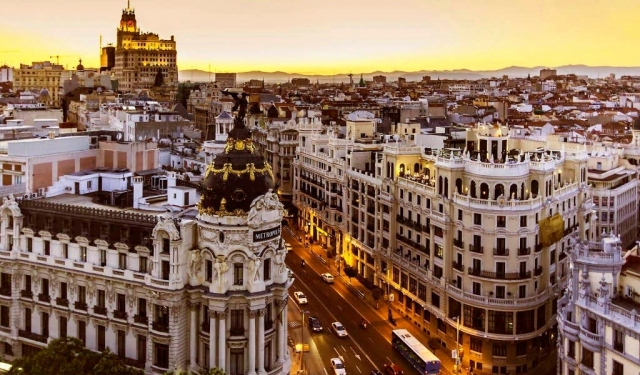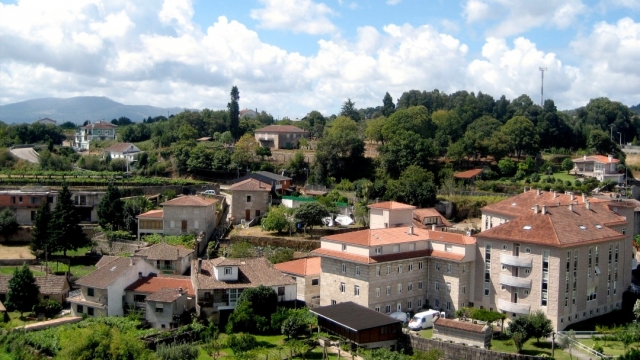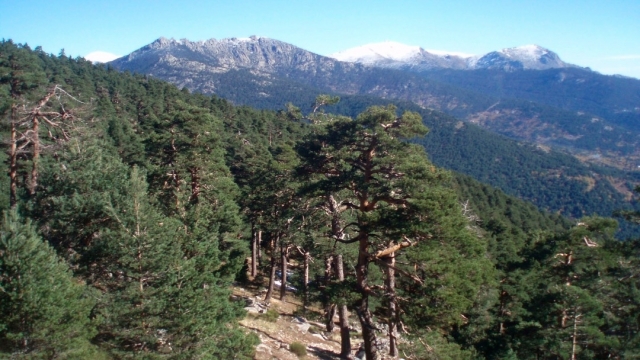Camino de Santiago from Madrid
Camino de Santiago from
We tell you how you can plan your way to Santiago from Madrid, the capital of Spain, choose the route you choose, and how to get back home when you have arrived in the city of Compostela.
- Camino de Santiago from Madrid
- Camino de Santiago from León
- Camino de Santiago from Sarria
- Camino de Santiago from Roncesvalles
- Camino de Santiago from A Coruña
- Camino de Santiago from Seville
- Camino de Santiago from Ponferrada
- Camino de Santiago from Burgos
- Camino de Santiago from Ourense
- Camino de Santiago from Bilbao
- Camino de Santiago from Oporto
- Camino de Santiago from Lisboa
- Camino de Santiago from Barcelona
- Camino de Santiago desde Pamplona
- The Camino de Santiago from Irun
- The Camino de Santiago from Astorga
- Camino de Santiago from Valencia
- The Way of Saint James from Saint-Jean-Pied-de-Port
- Camino de santiago from Viana do Castelo
- Doing the Way of Saint James from Zamora
- Doing the Way of Saint James from Zaragoza
- Doing the Way of Saint James from Alicante
- Camino de Santiago from Santander
- Camino Portugués from Coimbra
- Camino de Santiago from San Sebastián
- Camino de Santiago from Vigo: Guide of stages
- Camino de Santiago from Salamanca
- Camino de Santiago from Villafranca del Bierzo
- Camino de Santiago from Pontevedra
- Do the Camino de Santiago from Almería
- Camino de Santiago from Valladolid
- Doing the Way of Saint James from Navarra
Going to the Camino de Santiago from Madrid, located in the peninsular center, offers pilgrims many options as to which route to choose. We tell you what options you will find to get you to the most popular route start points for pilgrims.
How to get to the French Way from Madrid
The French Way is by far the most used route by pilgrims who make the Camino de Santiago (in 2015, 65% of walkers used it). The route begins its route in Roncesvalles (or the port of Somport), in the Pyrenees, and it crosses the whole Peninsula from east to west until the Cathedral of Santiago de Compostela. Almost all the routes converge at some point of its route with the French Way, reason why can really be considered like the true artery of the Way of Santiago.
- How to get to Roncesvalles from Madrid
Roncesvalles marks the beginning of the French Way in the Pyrenees Navarro, already in Spain, to 770 kilometers of Santiago de Compostela. To get from Madrid to Roncesvalles you first have to move to Pamplona. We can do it in about 3 hours by Alvia train or in 5-6 hours by direct bus.
In Pamplona, we have to take a bus to Roncesvalles which takes 1 hour. And 10 min, operated by the company Autocares Artieda (only tickets can be purchased at the station). In winter (1 September / 30 June), from Monday to Thursday, there is a service at 3:00 p.m.; On Fridays, at 6:00 p.m. And on Saturdays at 4:00 p.m. On Sundays and public holidays there is no service. In summer (July 1 / August 31) the service is extended to two coaches: from Monday to Friday at 10:00 and at 18:00; Saturdays, at 10:00 and 16:00 and Sundays and holidays without service.
- How to get to Somport from Madrid
The port of Somport marks the beginning of the Aragonese Way or the French Way of Aragon, a traditional alternative to the main road from Roncesvalles, indicated to travel alone with the good weather, as it may be inaccessible in snowy seasons. This high mountain is border between Spain (Aragon Valley) and France and to get to it you have to do it from the nearby town of Jaca, in Huesca.
To get from Madrid to Jaca, you have to take several transports, something more cumbersome than getting to Roncesvalles. First we have to travel by train from Madrid to Huesca, a journey that takes about 2 hours. And 10 min, then in Huesca a direct bus to Jaca that will take us 1 h. And 15 min (Alosa bus service). We will travel to the top of Somport, a service offered by the Commonwealth of the High Valley of Aragon with 5 frequencies per day. This journey will take us 35 minutes.
- How to get to Sarria from Madrid
Sarria, in Lugo, is the starting point of the French Way more chosen year by year among the pilgrims that cross the Camino de Santiago. The reason is that it is the first start / end location of the stage of the route that is beyond the minimum 100 kilometers required by the Cathedral of Santiago to grant compostela to the pilgrims. From Sarria we are separated only 5 stages from Santiago de Compostela.
We can get from Madrid to Sarria by train or by bus. By train there is a daily train-hotel service from Sunday to Friday leaving Madrid at 22.30 and arriving in Sarria before 7 in the morning (no service on Saturdays). If we decide to travel by bus we must know that first you have to travel to Lugo, a journey that takes something less than 7 hours. In Lugo you have to take another direct bus to Sarria that will take us 35 minutes (service offered by the company Monbus) that has services every day of the week in up to 5 different schedules.
How to get to the Portuguese Way from Madrid
The Portuguese Way is the second route chosen by the pilgrims every year; It is a parallel road to the Portuguese Atlantic coast, starting from Lisbon, passing through Porto and entering Galicia through Tui (Pontevedra), after crossing the Miño River, until reaching Santiago in the south. Precisely is Tui the location from which more pilgrims cross this route Jacobean, being Oporto and Lisbon the most chosen by the Portuguese rosemary.
- How to get to Tui from Madrid
Tui, like Sarria in the French Way, is the locality that marks in the Portuguese Way the 100 kilometers minimum required so that the pilgrims can request the compostela in their arrival to the Cathedral of Santiago. Therefore it is the locality to which more pilgrims move to begin their route by the south until Santiago.
From Madrid you can reach Tui by train or bus. By train the fastest way is to take one of the Alvia that provide service every day of the week (with departure at 15:00 h.), With stop at Guillarey station, a journey that takes six hours. There is also a hotel train that leaves at 22.30 and arrives before 7 in the morning. The parish of Guillarey belongs to Tui, but is located 5 kilometers from the town, where you can go by taxi or bus.
The pilgrims can also choose to go from Madrid to Vigo by bus (Avanza and Alsa from the T4), a journey that takes about 7 hours. Already in Vigo, we can choose to take a bus to Tui, with services every day (Monday to Friday, every half hour) or go by train, with two services a day and taking 1 hour and 10 min.
- How to get to Oporto from Madrid
Oporto is one of the largest cities through which the Portuguese Way crosses and a very common point of beginning pilgrimage on the Camino de Santiago. The city of the Atlantic coast is close to Pontevedra and the pilgrim who starts here his trip is only 10 steps to Santiago de Compostela.
Porto is really well connected with cities like Madrid or Barcelona by plane, being possible to find really cheap daily flights to the Portuguese city, operated by Ryanair. Going by train is inadvisable, since the only way from Madrid is to go first to Vigo or to Lisbon. Although it is not the most recommended option for time savings, you can go by bus from Madrid to Porto with regular routes that take 9 hours (Alsa and Eurolines).
How to get to the Northern Way from Madrid
The Northern Way, which runs from Irún parallel to the entire Cantabrian coast, is one of the most impressive pilgrimage routes that you can choose from. Like other roads to Santiago, the one of the North ends up joining in its route to the French Way, making it to the height of Arzúa. The entrance of this millenary route in Galicia is made by the town of Ribadeo.
In the Northern Way we do not find a starting point as wide as Sarria is for the French Way, however we suggest you to travel well from its beginning in Irún, or from Oviedo (about 12 stages to Santiago de Compostela)
- How to get to Irún from Madrid
In Irún, Guipúzcoa, the North Road begins, which runs along the entire Cantabrian coast until entering Galician. From Irún to Santiago de Compostela the pilgrim has more than 700 kilometers of route ahead for beautiful landscapes, demanding terrain for the feet and harsh climatology.
The city of Guipuzcoa is well connected to the capital by train, bus and plane. There are daily buses from the Avenida de América station and the T4 from Barajas Airport. By train, we can take an Alvia or Intercity direct (several trains a day) to Irún, arriving in less than 7 hours. Finally, if you take the plane, there are direct flights to the Airport of San Sebastián (Hondarribia) that only take an hour. In Hondarribia you can take a direct bus to Irún which takes approximately 25 minutes.
- How to get to Oviedo from Madrid
Oviedo is one of the most important cities of the Northern Way, from where we can decide whether to continue along the Cantabrian coast or to detour inland to travel the Primitive Way. It is one of the most chosen starting points of pilgrimage in the itinerary of the North Path.
The capital of the Principality of Asturias is well connected with the capital. To get from Madrid to Oviedo we can take the train, the bus or the plane. There are several daily trains from Chamartín station that will take us to Oviedo in just 4 hours. If we decide to travel by bus, from Méndez Álvaro station and from T4 de Barajas, coaches depart every day arriving in Oviedo in less than 5 h and 30 min. Finally by airplane we will find between 3 and 7 direct daily flights to Oviedo of 1 hour of duration
Camino de Madrid to Santiago de Compostela
If you live in Madrid and you are a pilgrim who thinks that the Camino de Santiago is "made from the door of the house", you must know that from the capital there is a long tradition route, the Camino de Madrid. This way leaves near the Royal Palace (church of Santiago) crossing the community of Madrid towards the north until crossing the Mountain range of Guadarrama direction to the province of Segovia. Cross the northern Castilian plateau passing also through the provinces of Valladolid and Leon until arriving at Sahagún, where the Camino de Madrid joins with the Via de la Plata, which later joins the French Way to Santiago de Compostela.
How to get from Santiago de Compostela to Madrid
From Santiago de Compostela, at the end of the Camino, we can return to Madrid by bus, train or plane, depending on our pocket. By bus the fastest service (ALSA) will take us less than 8 hours, calling in A Coruña, Lugo, Ponferrada and Madrid. By train, the journey Santiago de Compostela - Madrid (Chamartín) will bring us to the capital in just 5 hours, with several services every day. Finally we can choose the plane to return, with direct flights operated by Ryanair and Iberia Express that only take 1 hour. And 15 min.
- Camino de Santiago from Madrid
- Camino de Santiago from León
- Camino de Santiago from Sarria
- Camino de Santiago from Roncesvalles
- Camino de Santiago from A Coruña
- Camino de Santiago from Seville
- Camino de Santiago from Ponferrada
- Camino de Santiago from Burgos
- Camino de Santiago from Ourense
- Camino de Santiago from Bilbao
- Camino de Santiago from Oporto
- Camino de Santiago from Lisboa
- Camino de Santiago from Barcelona
- Camino de Santiago desde Pamplona
- The Camino de Santiago from Irun
- The Camino de Santiago from Astorga
- Camino de Santiago from Valencia
- The Way of Saint James from Saint-Jean-Pied-de-Port
- Camino de santiago from Viana do Castelo
- Doing the Way of Saint James from Zamora
- Doing the Way of Saint James from Zaragoza
- Doing the Way of Saint James from Alicante
- Camino de Santiago from Santander
- Camino Portugués from Coimbra
- Camino de Santiago from San Sebastián
- Camino de Santiago from Vigo: Guide of stages
- Camino de Santiago from Salamanca
- Camino de Santiago from Villafranca del Bierzo
- Camino de Santiago from Pontevedra
- Do the Camino de Santiago from Almería
- Camino de Santiago from Valladolid
- Doing the Way of Saint James from Navarra
Routes
Blog
 How to get to Sarria to do the Camino de Santiago
How to get to Sarria to do the Camino de Santiago
 Descubre la magia del Camino de Santiago Portugués por la costa
Descubre la magia del Camino de Santiago Portugués por la costa
 5 tours culturales que puedes hacer en Galicia si decides hacer un alto en el camino
5 tours culturales que puedes hacer en Galicia si decides hacer un alto en el camino
 Doing the Camino de Santiago in June: What you should know?
Doing the Camino de Santiago in June: What you should know?
Information
Points of interest
Cities & Towns | Hostels | Lodgings | Restaurants | Saddlery | Doctors | Points of interest | Bikes workshop
Contact us | Privacy policy | Cookies policy | | Terms of use | Authorship | Web Map | Consentimiento
© Copyright LA VOZ DE GALICIA S.A. Polígono de Sabón, Arteixo, A CORUÑA (ESPAÑA) Inscrita en el Registro Mercantil de A Coruña en el Tomo 2438 del Archivo, Sección General, a los folios 91 y siguientes, hoja C-2141. CIF: A-15000649
Developed and managed byHyliacom



